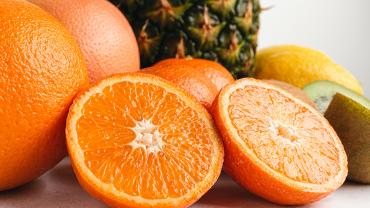
In traditional Chinese medicine and South American folk medicine, bitter orange was used for various health applications including gastrointestinal and nervous system complaints such as indigestion, diarrhea, constipation, insomnia, and anxiety. Bitter orange (Citrus aurantium L.) extract is derived from immature Seville orange fruit that contains a family of compounds that mimic the actions of the sympathetic nervous system – acting like the neurotransmitter epinephrine (adrenaline) – but without the stimulant side effects. One of its primary amine compounds, p-synephrine, has been shown to safely increase thermogenesis and basal metabolic rate (BMR) without adverse cardiovascular stimulation in humans.
By increasing BMR and thermogenesis, and supporting healthy blood glucose and fat metabolism, bitter orange extract supports healthy weight management in a safe manner unlike many other weight management formulas on the market. P-synephrine helps to stimulate the liver’s ability to utilize carbohydrates via multiple biochemical pathways for energy production such as glycogenolysis, gluconeogenesis, and glycolysis while also increasing the breakdown of fat. P-synephrine is shown in animal studies to be mediated by β-3-adrenergic signaling which is associated with thermogenesis and lipolysis, a process that is Ca(2+) and cAMP-dependent. In addition to weight loss, C. aurantium (CA) is also widely used for appetite control, enhanced sports performance, energy, and cognitive function. The amines found in bitter orange may also help increase lean muscle mass by facilitating cellular uptake of glucose into skeletal muscle.
According to an animal study in the journal Nutrients, eight-week administration of CA resulted in significant fat mass, cholesterol, and body weight reductions, suggesting that bitter orange may improve obesity by regulating adipogenesis and thermogenesis via AMPK? activity. In another animal model, p-synephrine reduced body weight gain, increase glutathione and catalase levels, and decreased lipid peroxidation markers suggesting weight loss and antioxidant properties. In an acute lung injury-induced animal model, the amine was also found to inhibit NF- ?? signaling, therefore reducing inflammation, a common factor in both obesity and during strenuous physical activity. CA’s chemical composition of various phenolic compounds including flavonoids and terpenoids is a major contributor to its many health-promoting effects, including its potential anti-inflammatory and anti-obesity properties.
It is important to use bitter orange supplements that are standardized to contain primarily p-synephrine protoalkaloids with negligible amounts of m-synephrine. Unlike p-synephrine, m-synephrine is undesirable as it may cause increases in blood pressure and heart rate and other adverse stimulant effects. Many products on the market contain synthetic m-synephrine and often do not specify what kind of synephrine they contain. Certain types of bitter orange do not control the levels of m-synephrine.
Other constituents that may increase thermogenesis and/or help aid in healthy weight management due to their impact on blood glucose and dietary fat metabolism include green tea extract (specifically its phytochemical, EGCg), L-carnitine, Garcinia cambogia, Coleus forskohlii, American ginseng, mucuna pruriens, L-tyrosine, and chelated chromium and vanadium nicotinate. These compounds may be supplemented along with a well-balanced diet rich in fiber, protein, and healthy fats with anti-inflammatory properties, and daily movement.
By Caitlin Higgins, MS, CNS, LDN